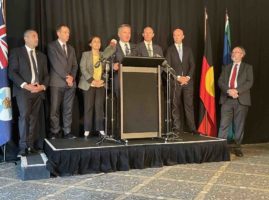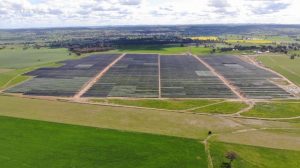The Smart Energy Council has slammed one of the key electricity network transmission access reforms proposed by the Energy Security Board, saying it will make the task of reaching 82% renewables by 2030 a mission impossible.
In a scathing submission to the ESB, the SEC says it is “fundamentally opposed” to the concept of Locational Marginal Pricing, a short term price signal intended to help investors decide on the best place to develop a new renewable energy project based on the amount of congestion.
SEC acting CEO Wayne Smith says the controversial reform, proposed in the ESB’s Transmission Access Reform Directions Paper in May, should instead be called “SolarStopper,” because it stifles the development of new large-scale PV projects.
Smith also questions the ongoing role of the Energy Security Board, which he says “continues to ignore” the repeated opposition to Locational Marginal Pricing (LMP) from across the renewable energy industry.
“The ESB has for years continued to pitch a version of Locational Marginal Pricing and the Congestion Management Mechanism, knowing there is no consensus on the approach, and knowing that it will produce no outcomes,” the submission says.
“Approximately 90% of the submissions to the May Consultation Paper opposed LMP,” it adds.
Among that number is the Clean Energy Investor Group (CEIG), which in October of last year expressed its own concerns about the LMP reform, arguing it does nothing to address Australia’s grid congestion problems, while also threatening ongoing investment in renewables.
Similarly, the CEIG also took aim at the ESB, for ignoring ideas that could spur new investment and being difficult to work with.
CEIG chair and CEO Simon Corbell said the proposed LMP does nothing to physically curtail the congestion risk because as soon as another project connects to the grid the earlier movers then face congestion risk and curtailment.
“It means we will continue to see very high levels of revenue risk for new projects because of congestion, and congestion will continue to grow over time,” he told RenewEconomy at the time.
“Investors will remain reluctant to commit to new projects if they can’t proceed with a better level of certainty around being able to sell their product and get to market. Congestion stops being able to get that product, energy, to market.”
The SEC says it is the sheer complexity of Locational Marginal Pricing that will stifle the development of new projects.
“The additional layer of complexity forced by any iteration of LMP is likely to halt projects such that it will raise
an energy security risk,” Smith writes in the submission.
“A slow buildout of new renewable energy projects over the coming decade will not match the outcoming retirement of coal fired power plants.”
The fresh broadside from the SEC follows an updated directions paper from the ESB in November that keeps its preferred congestion management model in reserve, but canvasses two new “hybrid options”, one that allows priority access and another with a congestion fee.
ESB chair Anna Collyer said at the time that access reform is inherently complex and all options require difficult trade-offs, but added that a failure to act will deliver a less orderly and more expensive transition for customers.
“We must ensure we have a consistent framework that avoids inefficient overbuild and dispatch, provides more certainty to investors about likely curtailment levels, supports market- driven investment in storage and hydrogen, and ensures we make the best use of new transmission investments,” Collyer said in a statement.
“Landing transmission access reform is key to achieving those objectives and delivering an orderly transition that supports the long-term interests of all consumers.”
To this development in November, the EIG’s Corbell responded with cautious optimism, welcoming the ESB’s “growing recognition” of the importance of addressing congestion to reduce the cost of capital for new projects.
But the SEC says work on any reform that includes Locational Marginal Pricing “needs to cease immediately,” arguing that the industry “cannot afford any additional investor uncertainty at such a crucial period in its buildout.”
Smith, like Corbell, says the Smart Energy Council is keen to work with governments on the development and implementation of an alternative approach to addressing grid congestion problems, with the intention of reaching consensus across key stakeholders.
“This is the approach that we successfully adopted in relation to the Capacity Investment Scheme, which was strongly supported by the Smart Energy Council, the Clean Energy Investor Group and Climate Action Network Australia,” he says.
“We stand ready to again work closely with Australian Governments and key stakeholders in resolving these critical issues.”










